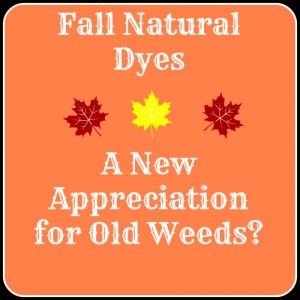Frosty days and cool nights, bring thoughts of dying to my mind. I don’t know about you, but I enjoy stalking the elusive fall dyes. Woad is more of a summer colour, and most yellows also dye in summer. But there is one colour which is only harvestable in the fall, madder red.
When growing madder, Rubia Tinctorum it requires five years, before you can harvest the roots. The roots should be harvested in fall for maximum dye and weight. In some areas, not mine, madder will produce seed which can be planted to start another bed. In my area, we divide the roots and use divisions to start a fresh bed.
A few years ago, I identified a plant known as “bedstraw” and discovered that it is in the madder family. Although this plant is a perennial, its roots do not grow as well as Rubia tinctorum. So today I am going on a hunt for wild madder, come with me and see what will be found.
Bedstraw is not illusive in the summer. It stands 2 feet tall among bushes, and grass. Its white flowers, cone shaped, are distinctive among the nearby greens, browns, and yellows. The stalk is square, a distinctive feature of the madder family. The leaves grow in whorls around the square stalk, narrow and javelin shaped.
In fall the plant becomes illusive, another drab brown against a field of drab brown. No longer lush and green, the pastures are grazed down to nondescript dusty browns. On the mountain there are still some green plants and among them lurks the Bedstraw, tucked among the bushes and hiding within the grasses it waits.
There are not many roots per plant and the roots are small. Each plant is interconnected with other plants, so you can pull some roots up by hand. But, for actual harvesting it is necessary to use a shovel. It is also better not to pull up the plant, unless you have a shovel, since the plant is a marker for where the roots are.
I did not expect to go walking, so did not bring a shovel myself. If I had brought the shovel, then I would have been able to harvest the roots. I will head back later in the week and find some more Bedstraw, or cleavers, the wild madder of Canada. Utilizing local weeds is a perfect example of bioregional colour, and is a unique and practical way to have some fall colour fun.
Cleavers, that annoying sticky, square stemmed weed, is also from the madder family. Its roots will also produce a red dye, just like Bedstraw and Madder. Cleavers usually hangs out in the garden, in warm and fertile soils. This plant can be frustrating for gardeners, but I’ve noticed it doesn’t like the gardens of natural dyers.
Back to You:
What Madders do you have in your area? What adventures have you had seeking for wild members of the madder family? Leave a comment.